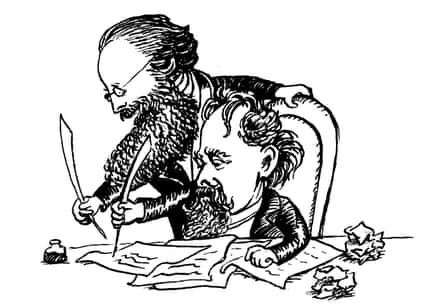Charles Dickens may be lauded by many as the greatest Victorian novelist, but one close friend did not demur from fierce criticism after the writer’s death.
Wilkie Collins, the author of The Woman in White, collaborated on drama and fiction with Dickens and the two enjoyed a long, close friendship until Dickens’s death in 1870.
While they shared opinions on each other’s writing, it was only after Dickens died that Wilkie revealed what he truly thought about some of his friend’s major works.
Handwritten notes by Collins in his copy of John Forster’s The Life of Charles Dickens, and discovered in Collins’ library after his own death in 1889, show he was unsparing.
Now the hunt is on for that annotated copy of Forster’s book, which was last known to have been sold at auction in 1890, for an exhibition called Mutual Friends: The Adventures of Charles Dickens and Wilkie Collins at the Charles Dickens Museum in London.

According to Collins, Barnaby Rudge was the “weakest book that Dickens ever wrote”. Of the latter half of Dombey and Son, he wrote: “No intelligent person can have read without astonishment at the badness of it.”
The Mystery of Edwin Drood, Dickens’ unfinished final work, was “the melancholy work of a worn-out brain”. And though Oliver Twist was a “wonderful” book, its defect was “the helplessly bad construction”.
Collins noted that the character Nancy “is the finest he ever did. He never afterwards saw all sides of a woman’s character – saw all round her. That the same man who could create Nancy created the second Mrs Dombey is the most incomprehensible anomaly that I know of in literature.”
On the first page of the book, where Forster proclaims Dickens “the most popular novelist of the century”, Collins added “after Walter Scott”.

Sold by the auction house Puttick and Simpson on 22 January 1890, the book’s whereabouts is unknown. Collins’ notes were recorded in the 20 January 1890 issue of the Pall Mall Gazette in an article previewing the auction.
Emma Harper, the curator of the exhibition, said the copy was “a treasure trove of the unvarnished opinions of a great author on a fellow great author and friend”. As only three of Collins’s letters to Dickens survived, “we would be very grateful for any information on its whereabouts today”.
The exhibition will explore the bond between the two, their writing partnerships, travels and theatrical productions, and is the first to be dedicated to Collins. It will run from November 15- 25 February 2024, marking the bicentenary of his birth. It will also examine suggestions that Collins completed The Mystery of Edwin Drood.
Wilkie did praise Dickens too. In his preface to the 1860 edition of The Woman in White he described Dickens’ A Tales of Two Cities as “the most perfect work of constructive art that has ever proceeded from his pen”.
Paul Lewis, the presenter of BBC Radio 4’s Money Box, editor of Collins’s letters and secretary of the Wilkie Collins Society, said we must be grateful to the transcriber at the Puttick sale. He added: “ Anyone who has transcribed Wilkie’s writing knows the difficulties they faced and we cannot be sure they transcribed all the comments accurately or in full. So recovering the original volumes with these pen and pencil comments would be a real gift to Collins’s scholarship. Fingers crossed!”
Details of Mutual Friends: The Adventures of Charles Dickens & Wilkie Collins, at the Charles Dickens Museum, 48 Doughty Street, Holborn, can be found at www.dickensmuseum.com
